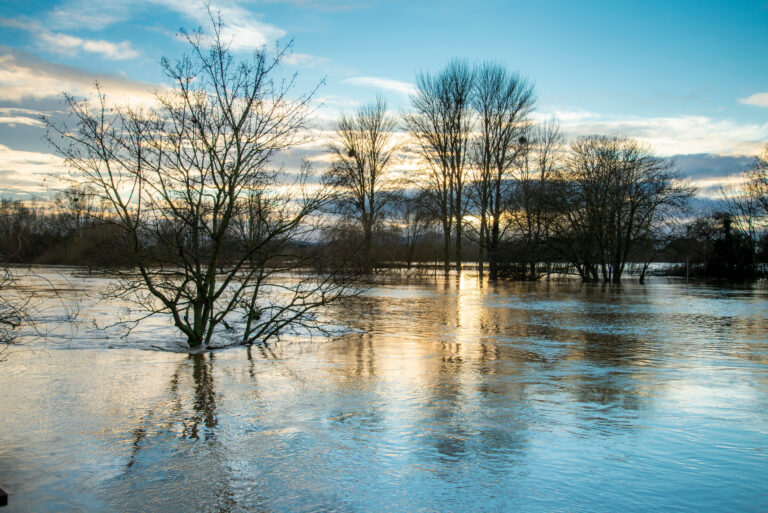The European Environment Agency (EEA) has published the first-ever European Climate Risk Assessment (EUCRA), which states that Europe is the fastest-warming continent in the world, and climate risks are threatening its energy and food security, ecosystems, infrastructure, water resources, financial stability and people’s health.
The agency also asserts that many of these risks have already reached critical levels and could become catastrophic without urgent and decisive action. Extreme heat, drought, wildfires and flooding, as experienced in recent years, will worsen in Europe even under optimistic global warming scenarios and affect living conditions throughout the continent. The EEA has published the EUCRA to help identify policy priorities for climate change adaptation and for climate-sensitive sectors.
According to the assessment, Europe’s policies and adaptation actions are not keeping pace with the rapidly growing risks. In many cases, incremental adaptation will reportedly not be sufficient and, as many measures to improve climate resilience require a long time, urgent action may be needed even on risks that are not yet critical.
The report highlights that some regions in Europe are hotspots for multiple climate risks. Southern Europe is at particular risk from wildfires and the impacts of heat and water scarcity on agricultural production, outdoor work and human health, the EEA states. Flooding, erosion and saltwater intrusion threaten Europe’s low-lying coastal regions, including many densely populated cities.
 Leena Ylä-Mononen (right), executive director of EEA, said, “Our new analysis shows that Europe faces urgent climate risks that are growing faster than our societal preparedness. To ensure the resilience of our societies, European and national policymakers must act now to reduce climate risks both by rapid emission cuts and by strong adaptation policies and actions.”
Leena Ylä-Mononen (right), executive director of EEA, said, “Our new analysis shows that Europe faces urgent climate risks that are growing faster than our societal preparedness. To ensure the resilience of our societies, European and national policymakers must act now to reduce climate risks both by rapid emission cuts and by strong adaptation policies and actions.”
The assessment identifies 36 major climate risks for Europe within five broad clusters – ecosystems, food, health, infrastructure and economy and finance. More than half of the major climate risks identified in the report demand more action now and eight of them are particularly urgent, mainly to conserve ecosystems, protect people against heat, protect people and infrastructure from floods and wildfires, and to secure the viability of European solidarity mechanisms, such as the EU Solidarity Fund.
Ecosystems
Almost all risks in the ecosystem cluster require urgent or more action, with risks to marine and coastal ecosystems assessed as particularly severe. The EEA report highlights that ecosystems provide multiple services to people, and therefore these risks have a high potential to cascade to other areas, including food, health, infrastructure and economy.
Food
Risks from heat and drought to crop production are already at a critical level in southern Europe, but countries in central Europe are also at risk. Specifically, prolonged droughts that affect large areas pose a significant threat on crop production, food security and drinking water supplies. As one solution, even a partial shift from animal-based proteins to sustainably grown plant-based proteins would reduce water consumption in agriculture and dependency on imported feed.
Health
Heat was found to be the gravest and most urgent climate risk driver for human health. At greatest risk are specific population groups, such as outdoor workers exposed to extreme heat, the elderly and people living in poorly built dwellings, in areas with a strong urban heat island effect or with inadequate access to cooling. Many levers to reduce climate risks for health lie outside traditional health policies, such as urban planning, building standards and labor laws.
Infrastructure
More frequent and extreme weather events increase the risks to Europe’s built environment and critical services, including energy, water and transportation. While coastal flood risks have been managed relatively well in Europe, the report points out that rising sea levels and changes in storm patterns can cause devastating impacts on people, infrastructure and economic activities. In southern Europe, heat and droughts cause substantial risks to energy production, transmission and demand. According to EEA, residential buildings also need to be adapted to increasing heat.
Economy and finance
Finally, Europe’s economy and financial system were found to be facing many climate risks. For example, climate extremes can increase insurance premiums, threaten assets and mortgages, and increase government expenditure and loan costs. The viability of the EU Solidarity Fund is already critically threatened due to costly floods and wildfires in recent years. Worsening climate impacts can also widen private insurance gaps and make low-income households more vulnerable.
The EEA’s EUCRA report builds on the existing knowledge base on climate impacts and risks for Europe, including recent reports by the Intergovernmental Panel on Climate Change (IPCC), the Copernicus Climate Change Service (C3S) and the Joint Research Centre of the European Commission (JRC), as well as outcomes of EU-funded research and development projects and national climate risk assessments. The knowledge in this first-of-its-kind assessment is synthesized with the aim of supporting strategic policymaking.
For more key climate measurement updates from the meteorological technology industry, click here.



